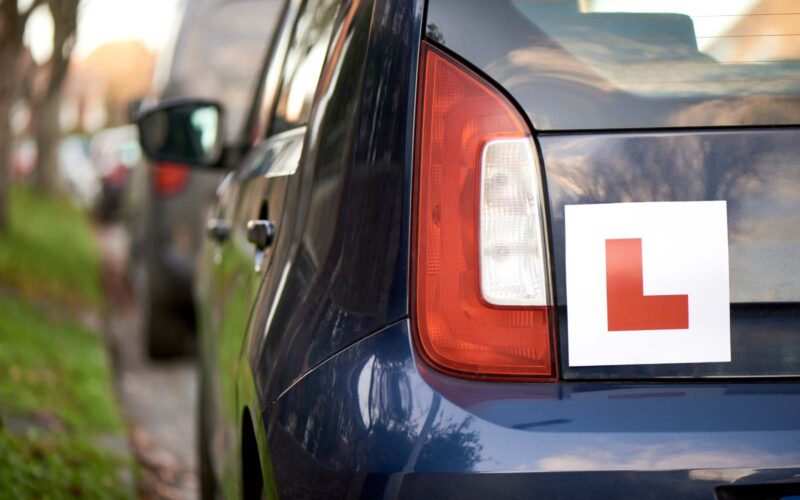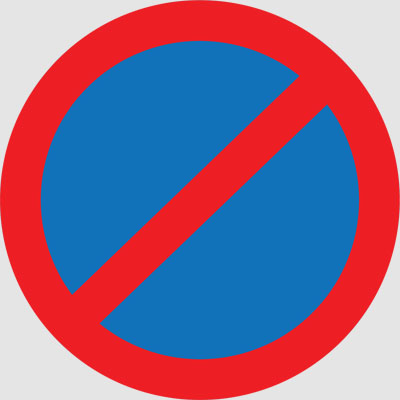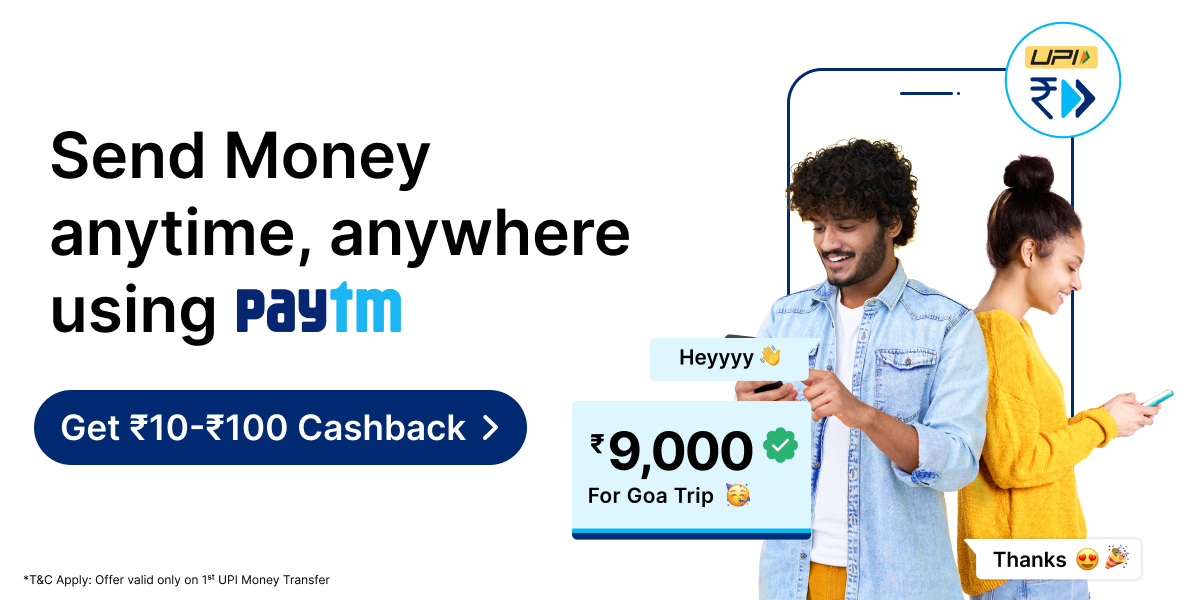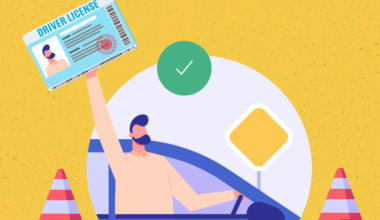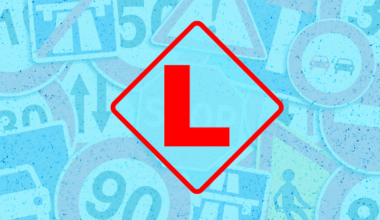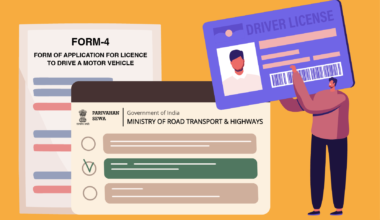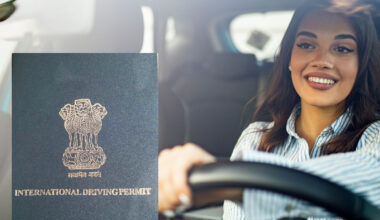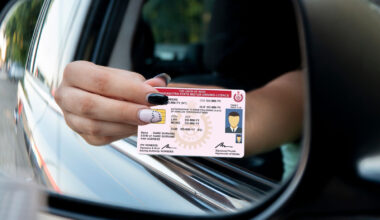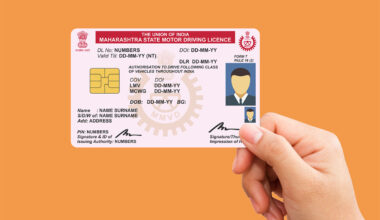Learning to drive is a big deal! It’s your ticket to freedom and independence. But before you hit the road, you’ve got to pass the Learning Licence Test. This test makes sure you know the rules and can drive safely.
In this blog, we’ll guide you through the world of Learning Licence Test Questions. Don’t worry if it feels a bit scary, especially if you’re new to this. Whether you’re a newbie excited about driving or just need a refresher, we’ve got your back! Keep reading to get a grasp of sample learning license test questions.
Table of Content
- Why Is a Learning License Important Before Permanent License?
- Process of Learning License Test in India
- Rules for Drivers While They Are on Learning License
- RTO Learning Licence Test Questions List
- How to Apply for Learner License?
- Learning License Fee Structure
- Key Information about the Learner’s Licence Test
- Documents Needed for Obtaining a Learner’s License
Why Is a Learning License Important Before Permanent License?
A Learner’s License is crucial before obtaining a Permanent License for several reasons:
- Safety: A Learner’s License allows new drivers to gain practical experience under supervision, gradually improving their driving skills. This helps ensure that new drivers are more capable and responsible when they obtain a Permanent License.
- Familiarization: Learning licence test questions and answers are essential for individuals applying for a Learner’s License. Learner’s License holders can familiarize themselves with traffic rules, road signs, and road conditions before driving independently. This is essential for reducing accidents and traffic violations.
- Knowledge of laws: Learner’s License applicants are required to pass a written test, which includes test questions on traffic laws and regulations. This knowledge is essential for safe and responsible driving.
- Risk reduction: Since Learner’s License holders are typically under the guidance of experienced drivers, the risk of accidents is lower. This phase of learning, which includes learning licence test, reduces the chances of endangering oneself and others on the road.
- Confidence building: Test questions for the Learner’s License written test are part of the confidence-building process. Learning to drive can be intimidating for new drivers. A Learner’s License period that includes learning licence test questions and answers helps build confidence and competence, making drivers more comfortable on the road.
- Compliance: India mandates a Learner’s License period that involves learning licence test questions and answers to ensure that aspiring drivers comply with a structured learning process, thereby reducing the likelihood of hasty or unprepared drivers on the road.
A Learner’s License is a crucial step in the process of obtaining a Permanent License as it promotes road safety, reduces risks, and ensures that new drivers are adequately prepared and knowledgeable about the rules of the road, including those covered in learning licence test questions and answers. It is a fundamental part of responsible and safe driving practices.
Process of Learning License Test in India
The process of obtaining a Learning License in India typically involves the following steps:
- Eligibility: Ensure that you meet the eligibility criteria, which usually include a minimum age requirement and the ability to understand traffic signs and rules.
- Document verification: Visit your local RTO (Regional Transport Office) or its official website to confirm the required documents. These often include proof of address, age, and identity.
- Form submission: Fill out the Learner’s License application form and submit it along with the necessary documents.
- Fee payment: Pay the required fee for the Learner’s License application. Fees can vary depending on the state and the type of vehicle class for which you are applying.
- Learning licence test booking: Schedule a slot for your Learner’s License test, which includes learning licence test questions. This can often be done online through the RTO’s website.
- Learning licence test: On the scheduled date, appear at the RTO or the specified test center for the written test, which may include ll test questions and answers. The test typically covers topics such as traffic rules, road signs, and safe driving practices, so familiarize yourself with these learning licence test questions.
- Results: After completing the test, you will receive the results. If you pass, you’ll be issued a Learner’s License, and if you fail, you may need to retake the test, so studying ll test questions and answers is essential.
- Learner’s license issuance: If you pass the test, your Learner’s License will be issued. This license allows you to practice driving under the supervision of a licensed adult driver.
- Learning period: During the Learner’s License period, you should practice your driving skills and gain experience under supervision. The duration of this period may vary from state to state.
- Permanent license application: Once you feel confident and have practiced enough, you can apply for a Permanent License. The application process may include a driving test to assess your practical skills.
Rules for Drivers While They Are on Learning License
When driving with a Learner’s License (LL) in India, there are specific rules and restrictions that you must adhere to. Here are some common rules for drivers with a Learner’s License:
- Supervision: You must be accompanied by a person who holds a valid Permanent License for the type of vehicle you are driving. This person should be seated in the front seat next to you.
- Learner’s sign: Your vehicle must display the designated “L” (Learner) sign or board prominently, typically on the front and rear of the vehicle.
- Time restrictions: In some states, there may be time restrictions on when you can drive with a Learner’s License. It’s important to check the local regulations in your area.
- No alcohol: It is strictly prohibited to consume alcohol or any intoxicating substances while driving, even with a Learner’s License.
- Obey traffic rules: You must follow all traffic rules and regulations, including obeying speed limits, road signs, and signals.
- Seat belts: Ensure that all passengers, including yourself, are wearing seat belts if the vehicle is equipped with them.
- Avoid overloading: Do not overload the vehicle with passengers or goods beyond the permitted capacity.
- No Towing: Typically, LL holders are not allowed to tow other vehicles. Your focus should be on developing your driving skills.
RTO Learning Licence Test Questions List
Q: What does the following sign indicate?
• A) Stop
• B) No parking
• C) Hospital ahead
Answer: A
Q: What does this sign represent?

• A) Keep left
• B) There is no road to the left
• C) Compulsory turn left
Answer: C
Q: When your vehicle is being overtaken, you should
• A) Allow the overtaking vehicle to pass without obstructing it
• B) Increase your vehicle’s speed
• C) Stop your vehicle and let the vehicle overtake
Answer: A
Q: What should you do when pedestrians are waiting to cross the road near a pedestrian crossing?
• A) Sound the horn and continue driving
• B) Slow down, sound the horn, and pass
• C) Stop the vehicle and wait for the pedestrians to cross the road before proceeding
Answer: C
Q: What documents are required for a private vehicle?
• A) Registration Certificate, G.C.R., Insurance Certificate
• B) Registration certificate, Insurance Certificate, Tax Token, Driving Licence
• C) Registration Certificate, Permit, Trip Sheet
Answer: B
Q: What does this sign represent?
• A) Y-intersection left
• B) Y-intersection right
• C) Side road left
Answer: A
Q: When a vehicle is involved in an accident causing injury to any person, what should you do?
• A) Move the vehicle to a safe location and leave the scene.
• B) Stop the vehicle and take photos of the accident.
• C) Provide all necessary assistance to the injured and report to the nearest police station within 24 hours.
Answer: C
Q: What does this sign represent?
• A) Turn right
• B) Side road right
• C) Keep right
Answer: B
Q: What does this sign represent?
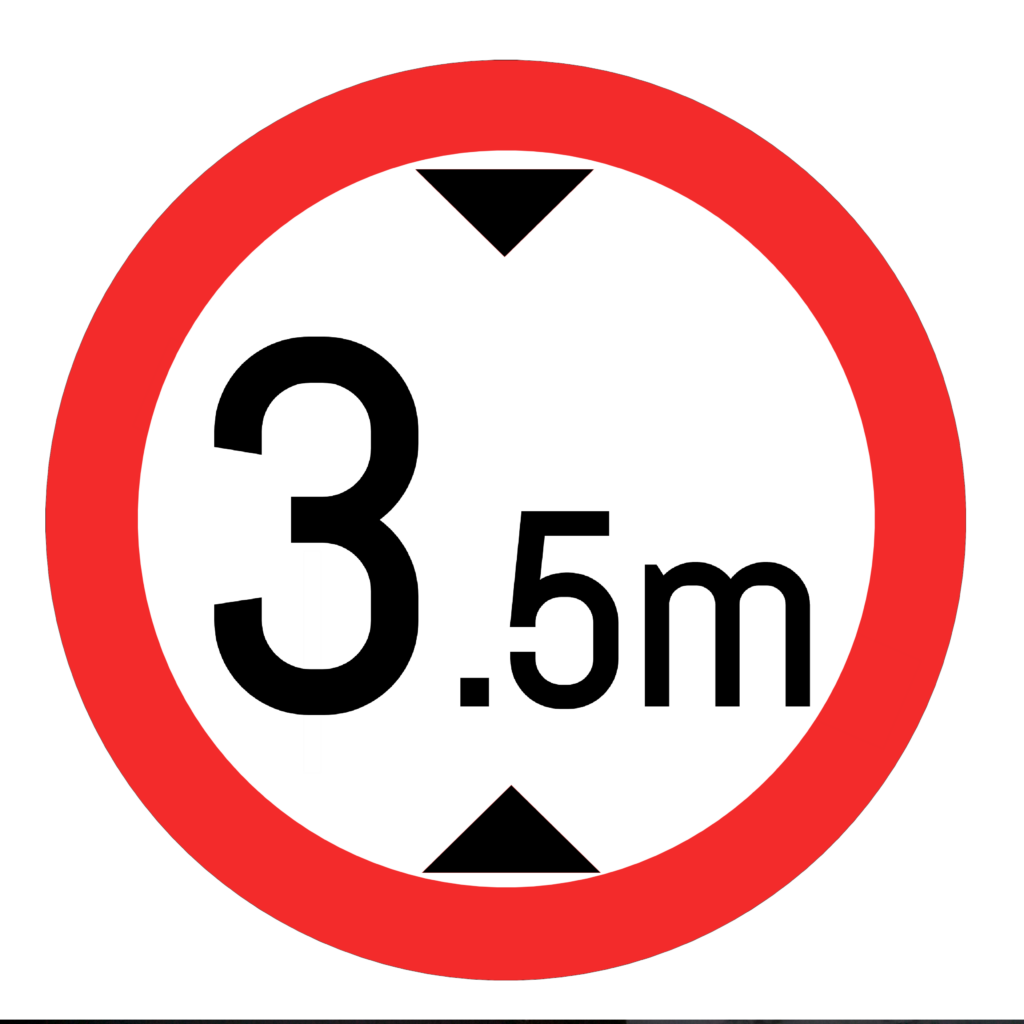
• A) Entry only for vehicles with height above 3.5 meters.
• B) Entry only for vehicles with width above 3.5 meters.
• C) Entry for vehicles having height not exceeding 3.5 meters.
Answer: C
Q: What does this sign indicate?
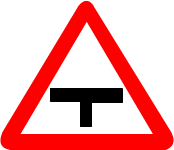
• A) Major Road ahead
• B) Cross Road ahead
• C) Narrow road ahead
Answer: A
Q: How many persons can be carried in the cabin of a Goods Carriage?
• A) 5 Persons
• B) Sufficient persons for loading and unloading the goods
• C) As many persons as recorded in the Registration Certificate
Answer: C
Q: What does this sign represent?
• A) No entry.
• B) One way.
• C) Speed limit ends.
Answer: B
Q: When can you overtake a vehicle in front?
• A) Through the right side of that vehicle.
• B) Through the left side.
• C) Through the left side, if the road is wide.
Answer: A
Q: When a vehicle approaches an unguarded railway-level crossing, what should the driver do before crossing it?
• A) Stop the vehicle on the left side of the road, get down from the vehicle, go to the railway track, and ensure that no train or trolley is coming from either side.
• B) Sound the horn and cross the track as fast as possible.
• C) Wait until the train passes.
Answer: A
Q: A location where parking is prohibited
• A) In front of a parked vehicle
• B) On a one-way road
• C) On the footpath
Answer: C
Q: What does this sign represent?
• A) Pedestrian crossing.
• B) Pedestrians may enter.
• C) Pedestrians prohibited.
Answer: A
Q: When you are approaching a narrow bridge, and another vehicle is about to enter the bridge from the opposite side, what is the appropriate course of action?
• A) Increase your speed and attempt to cross the bridge as quickly as possible.
• B) Turn on your headlights and pass the bridge.
• C) Wait until the other vehicle crosses the bridge and then proceed.
Answer: C
Q: What does this sign represent?
• A) Keep the right side.
• B) Parking on the right allowed.
C) Compulsory turn to the right.
Answer: B
Q: How can you identify a transport vehicle?
• A) By examining the tire size.
• B) By the vehicle’s color.
• C) By inspecting the vehicle’s number plate.
Answer: C
Q: When turning to a road to the left of the road in which you are going, you should
• A) Show the left turn signal, drive to the center and turn to the left.
• B) Sound horn and turn to the left.
• C) Show the left turn signal, keep to the left side of the road and turn to the left.
Answer: C
Q: What does this sign represent?
• A) Turn right
• B) Turn left
• C) Roundabout
Answer: C
Q: What does this sign represent?
• A) Stop
• B) No Stopping or standing
• C) Junction
Answer: B
Q: What is the validity of a learner’s license?
• A) Until the driving license is obtained.
• B) 6 months.
• C) 30 days.
Answer: B
Q: What does this sign represent?

• A) U-Turn prohibited.
• B) Right turn prohibited.
• C) Overtaking through the left prohibited.
Answer: B
Q: Where should the driver of a motor vehicle drive through?
• A) The right side of the road.
• B) The left side of the road.
• C) The center of the road.
Answer: B
Q: Validity of P.U.C.C. Pollution Under Control Certificate
• A) 6 months
• B) One Year
• C) Two years
Answer: A
Q: What does the following road sign represent?
• A) Road closed sign
• B) End of speed restriction sign
• C) No parking sign
Answer: A
Q: What does this sign represent?
• A) First aid post.
• B) Resting place.
• C) Hospital.
Answer: A
Q: What should be done when a vehicle is parked on the roadside at night?
• A) Ensure the vehicle is locked.
• B) The individual holding a valid driver’s license for that vehicle should occupy the driver’s seat.
• C) Keep the parking lights illuminated.
Answer: C
Q: When should the hand brake be used?
• A) To reduce the speed
• B) To apply sudden brakes
• C) To park a vehicle
Answer: C
Q: Under what circumstances may a driver of a vehicle overtake?
• A) While driving downhill.
• B) If the road is sufficiently wide.
• C) When the driver of the vehicle in front signals to overtake.
Answer: C
Q: What does this sign indicate?
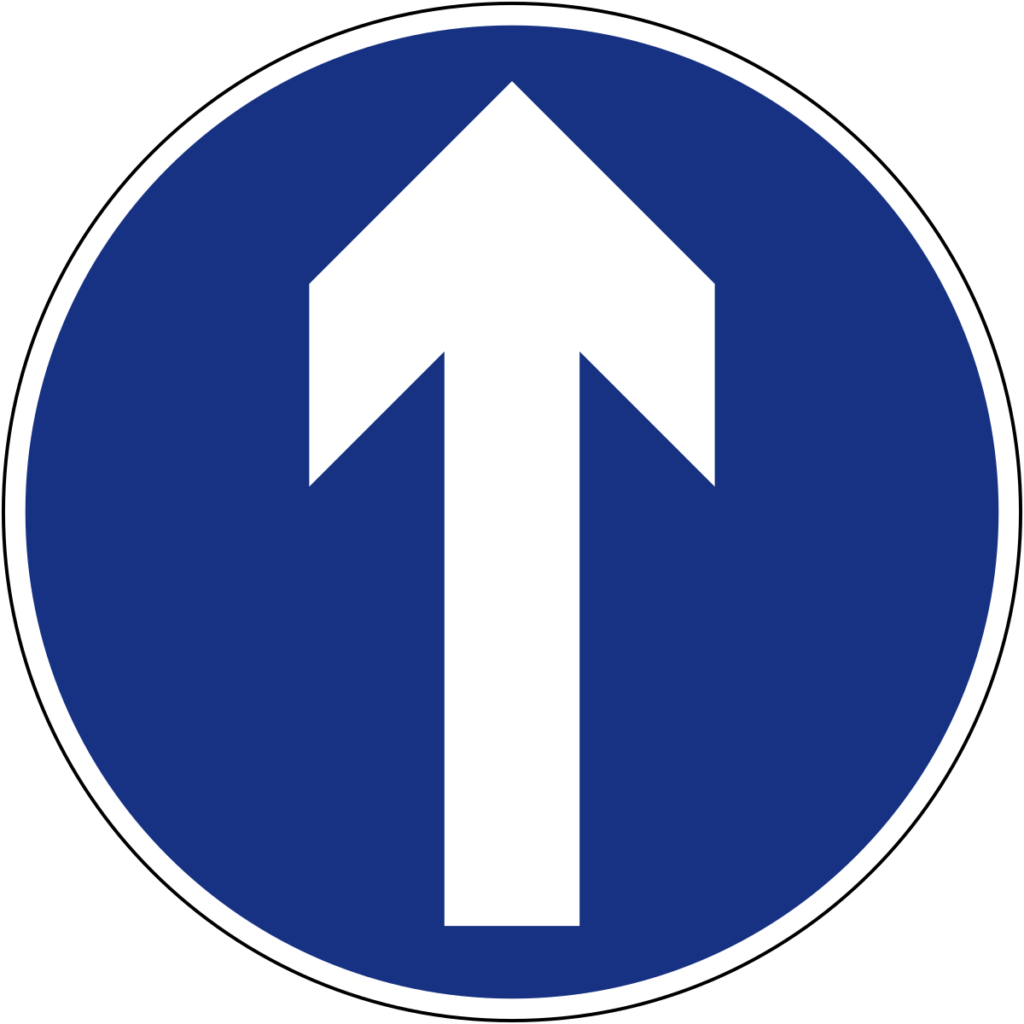
• A) No entry
• B) Ahead only
• C) Entry in both direction
Answer: B
Q: When are fog lamps used?
• A) During the night.
• B) When there is mist.
• C) When the opposite vehicle is not using dim light.
Answer: B
Q: What is the sign indicating?

• A) No entry for bullock carts
• B) No entry for bicycles
• C) No entry for all vehicles
Answer: A
Q: What does the following sign indicate?

• A) Caution, a narrow road ahead.
• B) Beware, a narrow bridge ahead.
• C) Alert, roads on both sides ahead.
Answer: A
Q. When refueling a vehicle, what should you avoid?
• A) Checking air pressure
• B) Smoking
• C) Using any vehicle lights
Answer: B
Q: What is the purpose of zebra lines?
• A) Stopping vehicles.
• B) Assisting pedestrians in crossing.
• C) Providing priority to vehicles.
Answer: B
Q: Is drunken driving allowed?
• A) Allowed in private vehicles.
• B) Allowed during nighttime.
• C) Prohibited in all vehicles.
Answer: C
Q: While driving with the headlight in high beam during the night, if a vehicle approaches from the opposite direction, you will
• A) Proceed keeping to the left
• B) Put the headlight in dim and bright alternatively several times
• C) Dim the headlight till the vehicle passes
Answer: C
Q: When you’re nearing a bend, is overtaking
• A) allowed
• B) not allowed
• C) permitted with caution
Answer: B
Q: When is overtaking not allowed?
• A) When the road ahead is not clearly visible
• B) When the road ahead is wide enough
• C) When the road center is marked with white broken lines
Answer: A
Q: What does this sign represent?
• A) Compulsory ahead or turn right
• B) Compulsory ahead or turn left
• C) Side road ahead
Answer: B
Q: Why should pedestrians avoid crossing the road at sharp bends or very near to a stopped vehicle?
• A) To avoid inconvenience to other vehicles.
• B) To avoid inconvenience to other road users.
• C) Because drivers of other vehicles coming at a distance may not see persons crossing the road.
Answer: C
Q: If a vehicle driver extends his right arm with the palm facing down and moves the arm upward and downward several times, what does this mean?
• A) He is turning to the left
• B) He is slowing down the vehicle
• C) He is allowing you to overtake
Answer: B
Q: What does this sign represent?
• A) Guarded level cross
• B) Unguarded level cross
• C) Barrier ahead
Answer: A
Q: Where is parking permitted?
• A) In intersections
• B) On sidewalks
• C) Where parking is not restricted
Answer: C
Q: You want to overtake a vehicle near a hospital. What should you do?
• A) Blow the horn continuously.
• B) Not blow the horn.
• C) Blow the horn only intermittently.
Answer: B
Q: What does the sign signify?
• A) No entry for students
• B) Permission for pedestrians
• C) No entry for pedestrians
Answer: C
Q: What does this sign represent?
• A) Narrow road ahead
• B) Dangerous dip
• C) Ferry
Answer: B
Q: What does this sign indicate?
• A) Compulsory horn sounding
• B) Continuous horn sounding
• C) Horn usage prohibited
Answer: A
Q: Is it legal to have more than two persons on a two-wheeler?
• A) Allowed in unavoidable circumstances
• B) Violation of law
• C) Allowed when the traffic is less
Answer: B
Q: When is overtaking prohibited?
• A) When it may inconvenience or endanger other traffic
• B) When the vehicle ahead is slowing down
• C) During nighttime
Answer: A
Q: What does the sign indicate?
• A) Overtaking prohibited through the right side
• B) Turn left
• C) Left turn prohibited
Answer: C
Q: What does the sign instruct?
• A) Drive the vehicle not exceeding 50 km/hr.
• B) Drive the vehicle at 50 km/hr
• C) Drive the vehicle exceeding 50km/hr.
Answer: A
Q: Before overtaking a vehicle, what should you ensure?
• A) No vehicle is approaching from behind
• B) The road ahead is clearly visible and it is safe to overtake
• C) The vehicle in front is turning left
Answer: B
Q. Where is the use of the horn prohibited?
• A) Mosque, Church, and Temple
• B) Near Hospital, Courts of Law
• C) Near Police Station
Answer: B
Q: What does the sign indicate?
• A) A left-hand curve.
• B) A left ascend.
• C) Keep left.
Answer: A
Q. What does the sign symbolize?
• A) Go straight
• B) One-way
• C) Prohibited in both directions
Answer: C
Q: Is it allowed to board and alight from a vehicle while it’s in motion?
• A) Permitted in a bus
• B) Permitted in an autorickshaw
• C) Prohibited in all vehicles
Answer: C
Q: What does the sign indicate?
• A) Trucks Prohibited
• B) Bus Prohibited
• C) Heavy vehicles Prohibited
Answer: A
Q: How long is a one-time tax for a new car valid?
• A) Till the registration of the vehicle is canceled
• B) 15 years
• C) 5 years
Answer: B
Q: When is a driver prohibited from making a U-turn?
• A) In a road where there are no traffic restrictions
• B) In a busy road
• C) When there are vehicles passing through on the left
Answer: B
Q: Minimum age for obtaining a license to ride a gearless motorcycle:
• A)18 years
• B) 21 years
• C) 16 years
Answer: 16 years
Q: What does this road sign indicate?
• A) Right reverse bend
• B) Left reverse bend
• C) Turn left and go ahead
Answer: B
Q:What signal should be used when taking a U-turn?
• A) Left turn signal
• B) Right turn signal
• C) Slow down signal
Answer: B
Q: In which situation should mobile phones not be used?
• A) In government offices
• B) In police stations
• C) While driving a vehicle
Answer: C
Q: When encountering the traffic sign “School,” what should you do?
• A) Stop the vehicle, sound the horn, and proceed.
• B) Slow down and proceed with caution.
• C) Sound the horn continuously and proceed.
Answer: B
Q: What does this sign represent?
• A) Left descend
• B) Left hairpin bend
• C) Keep left
Answer: B
How to Apply for Learner License?
- Begin by visiting the official website of the Ministry of Road Transport and Highways at https://parivahan.gov.in/.
- On the homepage, look for the “online services” option and choose “Driving license-related services” from the drop-down menu.
- Select your state and click on the “Apply for learner license” option.
- Carefully fill out the required form and click “Submit” once you’ve completed it.
- You’ll be prompted to upload scanned copies of the necessary documents.
- Proceed to pay the application fees by choosing your preferred payment gateway.
- Reserve an online slot for the test to demonstrate your knowledge of road rules.
- On the scheduled date, make your way to the Regional Transport Office (RTO) center to take the test.
- If you pass the test, your learning license will be dispatched to your provided address.
- In the event you don’t succeed on your first attempt, you can reapply for the test after a waiting period of one week.
Learning License Fee Structure
| Sl. No. | Purpose | Amount in Rs. |
| 1 | Issuance of learner’s licence (Form 3) for each class of vehicle | Rs. 150.00/- |
| 2 | Learner’s licence test fee or repeat test fee (as applicable) | Rs. 50.00/- |
| 3 | Test of competence to drive (for each class of vehicle) | Rs. 300.00/- |
| 4 | Issuance of a driving licence | Rs. 200.00/- |
| 5 | Issuance of an International Driving Permit | Rs. 1000.00/- |
| 6 | Renewal of driving licence | Rs. 200.00/- |
| 7 | Renewal of a driving licence after the grace period | Rs. 300.00/- (Additional fee: Rs. 1000 per year or part thereof beyond grace period) |
Key Information about the Learner’s Licence Test
| Learner’s Licence Test – Key Information | Details |
| Number of Questions in the Test | The test consists of 15 Multiple-Choice-Questions (MCQs). |
| Language Options for Driving Exam Questions | You can choose to take the test in English, Hindi, or any regional language. |
| Passing Score Required | To pass, you must correctly answer 60% of the questions, which means getting 9 out of 15 questions right. |
| Time Limit for Online Test | Each question allows 30 seconds for a total test duration of 8 minutes. |
| Number of Retake Attempts | If you don’t pass, you can retake the test after a waiting period of 7 days. |
Documents Needed for Obtaining a Learner’s License:
To obtain a Learner’s License, you will need to provide the following documents, along with the Learner’s License Form:
- Duly filled Application-cum-Declaration of Physical Fitness, Form-1.
- Self-attested copy of proof of residence.
- Two recent passport-sized photographs of the applicant.
- Self-attested copy of proof of age.
- Copy of an active light motor vehicle driving license, held for a minimum of one year (mandatory for those applying for a transport vehicle learner’s license), and the applicant must be at least 20 years old at the time of application.
- Self-attested copy of proof of educational qualification, with a minimum requirement of 8th-grade education (for those seeking a transport vehicle license).
- Valid Form-1A (required for transport vehicle licenses and for applicants above 40 years of age in other categories).
- Completed Application for a Learner’s License, Form-2.
- Payment of the prescribed fee.
In conclusion, the availability of Learning License Test Questions for 2023 and the opportunity to practice these questions are invaluable resources for individuals seeking to obtain their learner’s license. These practice questions provide a structured and efficient way to prepare for the test, ensuring that candidates are well-prepared and confident on test day. With dedication and consistent practice, aspiring drivers can enhance their knowledge and skills, ultimately contributing to safer roadways for all.


